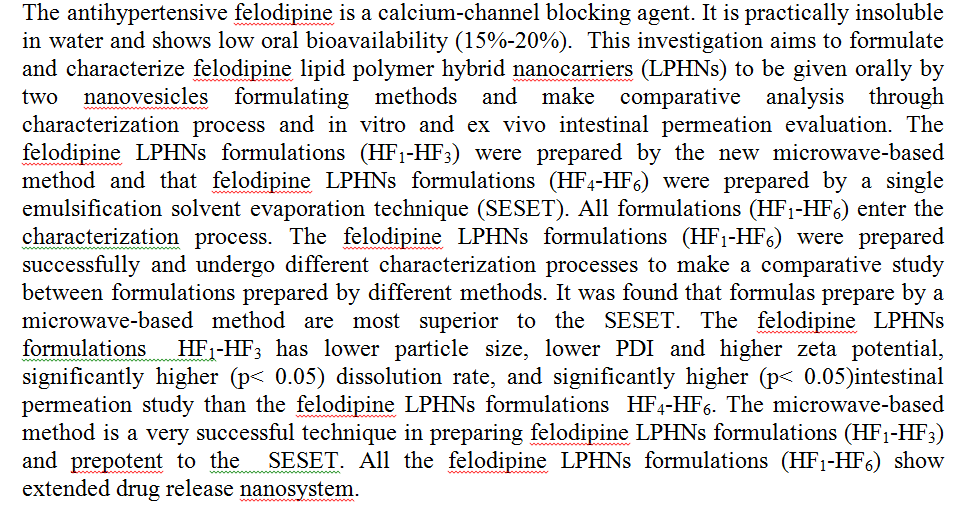Leishmania parasites are the causative agent of leishmaniasis. Many studies are inspecting chemical drugs, including the use of miltefosine and amphotericin B, but curative values may be limited for these drugs with side effects due to the chemical origin, therefore, investigating less toxic therapies is essential. The aim of this study was to investigate the effectiveness of artemisinin on Iraqi strain of Leishmania tropica, by experimental macrophage ex vivo infection of amastigotes into mouse macrophage cell-line RAW264.7. Different concentrations (100, 200, 300, 400, 500)μM of artemisinin (ART) were screened to examine the susceptibility of L. tropica amastigotes to invade macrophage cell line along three times of follow up (24, 48 and
... Show More (6)
(6)
Leishmania parasites are the causative agent of leishmaniasis. Many studies are inspecting chemical drugs, including the use of miltefosine and amphotericin B, but curative values may be limited for these drugs with side effects due to the chemical origin, therefore, investigating less toxic therapies is essential. The aim of this study was to investigate the effectiveness of artemisinin on Iraqi strain of Leishmania tropica, by experimental macrophage ex vivo infection of amastigotes into mouse macrophage cell-line RAW264.7. Different concentrations (100, 200, 300, 400, 500)μM of artemisinin (ART) were screened to examine the susceptibility of L. tropica amastigotes to invade macrophage cell line along three times of follow up (24, 48 and
... Show More (3)
(3)
Isradipine related to dihydropyridine (DHP) class of calcium channel blockers (CCBs). It is used to treat hypertension, angina pectoris, as well as Parkinson disease. It goes under the BCS class II drug (low solubility-high permeability). The drug will experience extensive first-pass metabolism in liver, thus, oral bio-availability will be approximately15 to 24 %.
The aim of the study is preparing stable oral oil in water (o/w) nanoemulsion of isradipine to promote the colloidial dispersion of isradipine in the nano range, so that it may be absorded by intestinal lymphatic transport in order to avoid hepatic first-pass metabolism (israpidi
... Show More (31)
(31)
 (9)
(9)
This study designed to prepare ultrafine apixaban (APX) o/w nanoemulsion (NE) based gel with droplet size below 50 nm as a good method for transdermal APX delivery without using permeation enhancer, alternatively, the formulation components itself act as permeation enhancer. APX, a potent oral anticoagulant drug that selectively and directly inhibit coagulation factor Xa, was selected as a good candidate for transdermal delivery as it displays poor water solubility (0.028 mg/mL) and low bioavailability (50%). APX-NE gel was prepared using triacetin, triton-x-100 and carbitol as oil phase, surfactant and cosurfactant respectively, while Carbopol 940 used as a gelling agent. Ex vivo permeation of APX-NE gel through human stratum c
... Show More (15)
(15)
 (6)
(6)
Abstract
The present investigation aimed to formulate a liquid self-microemulsifying drug delivery system (SMEDDS) of tacrolimus to enhance its oral bioavailability by improving its dispersibility and dissolution rate. Four liquid SMEDDS were prepared using maisine CC as oil phase, labrasol ALF as surfactant and transcutol HP as co-surfactant based on the solubility studies of tacrolimus in these components. The phase behavior of the components and the area of microemulsion were evaluated using pseudoternary phase diagrams. The formulations were also assessed for thermodynamic stability, robustness to dilution, self-emulsification time, drug content, globule size and polydispersity index. The prepared SMEDDS formulations exhibi
... Show More (13)
(13)
 (8)
(8)
 (3)
(3)
Background: Frovatriptan succinate (FVT) is an effective medication used to treat migraines; however, available oral formulations suffer from low permeability; accordingly, several formulations of FVT were prepared. Objective: Prepare, optimize, and evaluate FVT-BE formulation to develop enhanced intranasal binary nano-ethosome gel. Methods: Binary ethosomes were prepared using different concentrations of phospholipid PLH90, ethanol, propylene glycol, and cholesterol by thin film hydration and characterized by particle size, zeta potential, and entrapment efficiency. Furthermore, in-vitro, in-vivo, ex-vivo, pharmacokinetics, and histopathological studies were done. Results: Regarding FVT-loaded BE, formula (F9) demonstrated the best paramet
... Show More (20)
(20)
 (17)
(17)
Many pharmaceutical molecules have solubility problems that until yet consist a hurdle that restricts their use in the pharmaceutical preparations. Lacidipine (LCDP) is a calcium-channel blocker with low aqueous solubility and bioavailability.
Lipid dosage forms are attractive delivery systems for such hydrophobic drug molecules. Nanoemulsion (NE) is one of the popular methods that has been used to solve the solubility problems of many drugs. LCDP was formulated as a NE utilizing triacetin as an oil phase, tween 80 and tween 60 as a surfactant and ethanol as a co-surfactant. Nine formulas were prepared, and different tests performed to ensure the stability of the NEs, such as thermodyna
... Show More (19)
(19)
 (9)
(9)
Nanoceria have shown numerous unique characteristics, such as biocompatibility and are excellent agents for biological applications. The aim of this study is to investigate cerium oxide nanoparticles for 2, 2- diphenyl-1-picryl-hydrazyl-hydrate (DPPH) free radical scavenging activity and their ability to offer protection against ionizing radiation. In vitro antioxidant activity study of nanoceria particles has shown good free radical scavenging activity for DPPH radical assayed within a concentration range of 0.01 to 0.05 g/l, at higher concentrations of nanoparticles showed reverse trend in absorbance and inhibition indicating this finite rang of concentration is suitable for scavenging free radicals, also nanoparticles were found to ha
... Show More (6)
(6)
A numerical model for Polypropylene 575 polymer melts flow along the solid conveying screw of a single screw extruder under constant heat flux using ANSYS-FLUENT 17.2 software has been conducted. The model uses the thermophysical properties such as Viscosity, thermal conductivity, Specific heat and density of polypropylene 575 that measured as a function of temperature, and residence time data for process simulation. The numerical simulation using CFD models for single screw extruder and the polymer extrusion was analysed for parameters such as (thermal conductivity, specific heat, density and viscosity) reveals a high degree of similarity to experimental data measured. The most important outcome of this study is that geometrical, parame
... Show More
